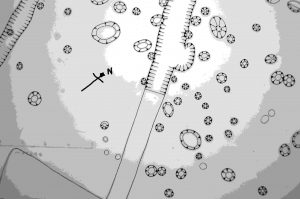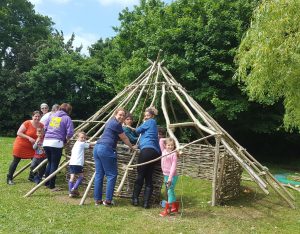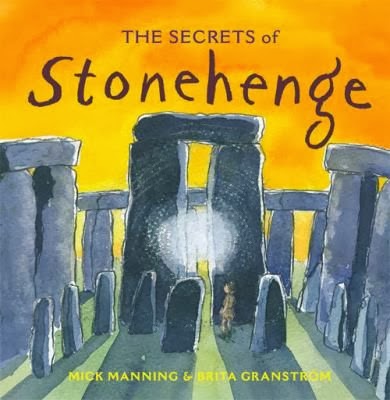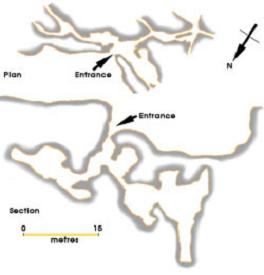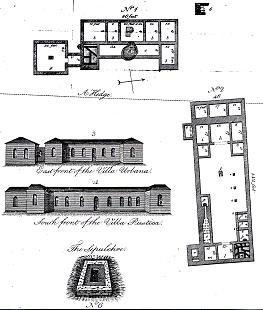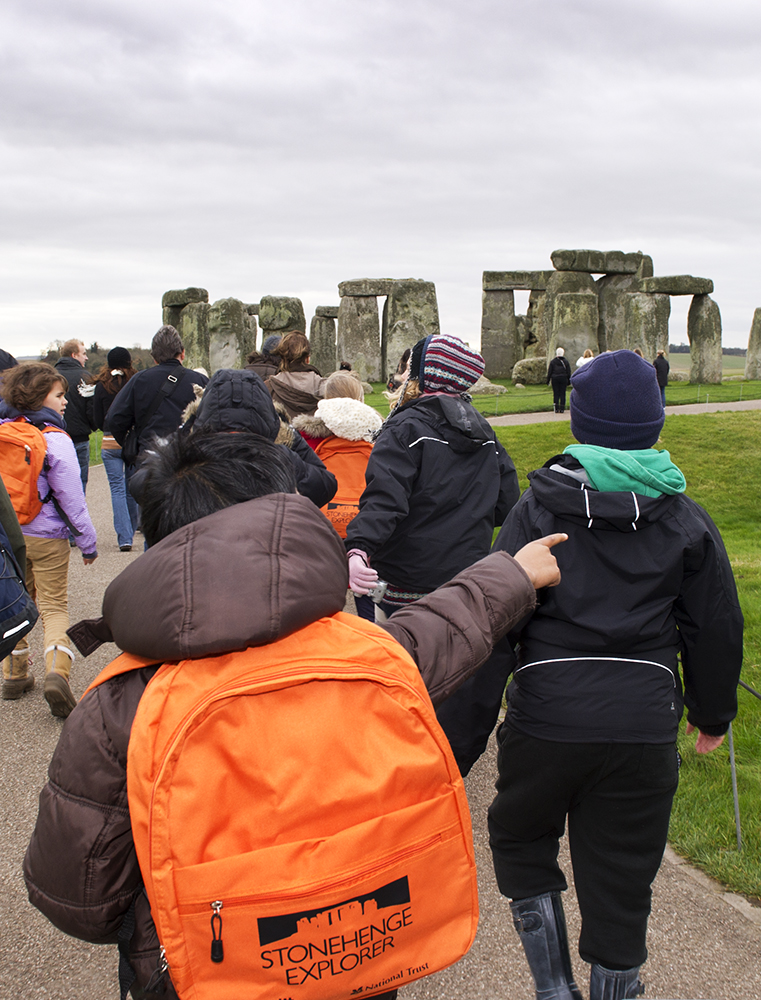Thanks to Trudie Cole of Poole Museum for this guest blog on using archaeology as a vehicle for teaching maths.
The introduction of prehistory in the history curriculum was great news for us here at Poole Museum, as we have a lot of archaeologists on the team. However, the elephant in the room was the increased focus on standards in maths and English. With such a crowded curriculum focused towards raising standards in these two subjects how could we realistically expect pushed teachers to develop new and interesting prehistory work?
The answer was fairly simple: look for ways where archaeology can help deliver across these core subjects. And actually, a quick review of the maths curriculum revealed lots of opportunities. There is a lot more content (so much that any realistic aim to cover it has to stretch out into other subjects), but there is also an emphasis on mathematical skills and developing reasoning and problem solving. The curriculum even explicitly mentions practicing maths in real life situations. It also talks about how maths should be taught through discussion and language and socially. To me, this sounds very much like social constructivism, which is a natural home for archaeological education.
In all honesty, I didn’t make these connections on my own. I have been working closely with the staff at Bearwood Primary and Nursery School and their visionary Head Teacher, Laura Bennett. Laura saw the potential for developing maths teaching and learning through an archaeology project, which gave us at Poole Museum, a green light and the support to go ahead.
Another fortunate piece in the puzzle is that Bearwood School is located in an area of high archaeological activity, although this is not well known. In the fields adjacent to the school, excavations in the 1980s revealed intensive settlement from the Neolithic until the Roman period, including an Iron Age roundhouse.
In discussion with school staff we decided to build a roundhouse on the school field. Many other people have built roundhouses, including within schools and with children and communities. So we knew we were doing something achievable. What would be unique about this project was the explicit link to children’s maths work.
We started planning early on and involved children from the school on the steering group. Early work included identifying sources of funding and applying for grants. Alongside this, museum staff worked with teachers to explore cross curricular links and how to bring various maths topics to be covered into the project. The aim was to really inspire the children and give them real life opportunities for problem solving.
Thanks to a grant from the Heritage Lottery Fund we had the money we needed to go ahead. We coppiced some materials ourselves (museum staff, parents and children) and bought other supplies we needed. We built the skeleton of the roundhouse using manpower from the school staff, children, parents and the community. We employed a thatcher to thatch the roof. Children from the school daubed the walls.
The build was a lot of fun and engaged everyone involved with active problem solving. You can find out more about the build, what we did and how we did it on the Poole Museum learning blog.
We held a community day to tell people about the project and gather memories of the local area. The school summer fayre was dedicated to the project and provided a showcase for the children to display their work.
A teacher’s pack will be released shortly with lots of the lesson plans that the teachers at the school used throughout the project. There will be more information on the Bearwood School website.
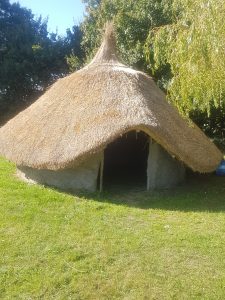
The finished roundhouse
What is particularly exciting about the project is that it has initiated a sea change in how staff at the school plan and teach. Our research indicates that many schools take a cross-curricular approach to subject delivery, but still teach maths separately. However, what our project has shown is that maths can be delivered in this way and not only is it possible, but it helps with coverage and creates an inspiring context for problem solving.
Laura Bennett and myself are really keen to develop the approach and share what we have learned. Please get in contact if you would like to find out more (t.cole@poole.gov.uk).

